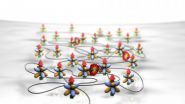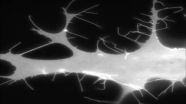(Press-News.org) LA JOLLA, CA—March 12, 2014—Scientists at The Scripps Research Institute (TSRI) have developed a method for modifying organic molecules that significantly expands the possibilities for developing new pharmaceuticals and improving old ones.
"This is a technology that can be applied directly to many medicinally relevant compounds," said Jin-Quan Yu, a professor in TSRI's Department of Chemistry and the senior author of the new report, which appears in Nature March 13, 2014.
The innovation makes it easier to modify existing organic compounds by attaching biologically active "functional group" to drug molecules. A typical small-molecule drug derives its activity from such functional groups, which are bound to a relatively simple backbone structure consisting chiefly of carbon atoms.
Pushing the Boundaries
Chemists over the past half-century or so have devised various methods for adding functional groups to carbon atoms, to make new compounds and to modify old ones. But a certain type of modification has remained largely out of reach.
Known as a "meta" C-H activation, this modification involves the temporary attachment of a helper molecule to one carbon atom, in such a way that the helper molecule extends past the nearest-neighbor carbon atom to the next-nearest carbon atom, and there mediates the addition of a functional group. It is a tricky task for a number of reasons, but mostly because the targeted attachment site is so far away and inaccessible. The carbon in the backbone of a typical organic compound is arranged in rings of six or so carbon atoms—and thus to reach from one such carbon over a second to a third means reaching almost to the far side of the ring.
In 2012, Yu and his colleagues published a landmark paper, also in Nature, which described a way to accomplish this feat with one set of compounds. They devised a helper molecule, with a long segment called a nitrile, that could attach to one carbon atom on the compound, arch over the next-door carbon atom, and in effect swing a palladium atom at its far end back—a bit like a crane swinging a wrecking ball—to the targeted carbon atom. There the palladium atom would act as a catalyst to dislodge the existing occupant, a hydrogen atom, enabling the attachment of the new functional group.
Following the same principle, Yu's team recently came up with a new template for making meta-C-H activations on a much more challenging set of organic compounds. Now, in the new study, the researchers have demonstrated the same task with a major family of compounds known as amines, including medicinally important heterocyclic amines. In so doing, the researchers found a way to use a helper molecule—also called a template—that is chemically simpler and more user-friendly than the ones they have described in previous work.
A Boost to Drug Discovery
Unusually for such a project, the TSRI chemists analyzed the 3D atomic structure of their template compound using X-ray crystallography as well as nuclear magnetic resonance spectroscopy. These studies revealed that the new template's ability to mediate the attachment of a new functional group to a distant carbon atom can be "tuned" by making slight changes to its chemical composition, including the choice of the proper metal catalyst at its working end.
"The key is to tune the shape of the template to create a subtle bias towards the targeted carbon hydrogen bond," said Yu. "At the same time the template's movement towards the target site has to be exploited effectively by a super-reactive catalyst."
Compounds that can be modified using the new technique include tetrahydroquinoline, benzooxazines, anilines, benzylamines, 2-phenylpyrrolidines and 2-phenylpiperidines. "All these are commonly used in medicinal chemistry either as final drug compounds or intermediate compounds from which the final compounds are made," Yu said.
Yu is now collaborating with the pharmaceutical company Bristol-Myers Squibb to use his meta-C-H activation techniques to make potential new drug compounds.
"Techniques like this one that enable controlled, remote C-H activation are just beginning to be adopted by industry, and should provide a boost to drug discovery and development efforts for many years to come," Yu said.
INFORMATION:
The other authors of the study, "Conformation-Induced Remote meta-C–H Activation of Amines," were Ri-Yuan Tang (lead author) and Gang Li, respectively a visiting professor and a research associate at TSRI during the study.
The study was supported by the National Institute of General Medical Sciences, part of the National Institutes of Health (1R01 GM102265).
Building new drugs just got easier
2014-03-12
ELSE PRESS RELEASES FROM THIS DATE:
Water-rich gem points to vast 'oceans' beneath the Earth: UAlberta study
2014-03-12
A University of Alberta diamond scientist has found the first terrestrial sample of a water-rich gem that yields new evidence about the existence of large volumes of water deep beneath the Earth.
An international team of scientists led by Graham Pearson, Canada Excellence Research Chair in Arctic Resources at the U of A, has discovered the first-ever sample of a mineral called ringwoodite. Analysis of the mineral shows it contains a significant amount of water—1.5 per cent of its weight—a finding that confirms scientific theories about vast volumes of water trapped 410 ...
Quantum chaos in ultracold gas discovered
2014-03-12
The team of Francesca Ferlaino, Institute for Experimental Physics of the University of Innsbruck, Austria, has experimentally shown chaotic behavior of particles in a quantum gas. "For the first time we have been able to observe quantum chaos in the scattering behavior of ultracold atoms," says an excited Ferlaino. The physicists used random matrix theory to confirm their results, thus asserting the universal character of this statistical theory. Nobel laureate Eugene Wigner formulated random matrix theory to describe complex systems in the 1950s. Although interactions ...
Key heart-failure culprit discovered
2014-03-12
SAN DIEGO, Calif., March 12, 2014 - A team of cardiovascular researchers from Sanford-Burnham Medical Research Institute (Sanford-Burnham), the Cardiovascular Research Center at Icahn School of Medicine at Mount Sinai, and the University of California, San Diego have identified a small but powerful new player in the onset and progression of heart failure. Their findings, published in the journal Nature on March 12, also show how they successfully blocked the newly discovered culprit to halt the debilitating and chronic life-threatening condition in its tracks.
In the ...
Protein key to cell motility has implications for stopping cancer metastasis
2014-03-12
VIDEO:
Aberrant filopodia are induced by co-expression of fluorescently labeled Cdc42 and non-fluorescent IRSp53. Fluorescence shows the cell shape, because Cdc42 localizes to the plasma membrane.
Click here for more information.
PHILADELPHIA - "Cell movement is the basic recipe of life, and all cells have the capacity to move," says Roberto Dominguez, PhD, professor of Physiology at the Perelman School of Medicine, University of Pennsylvania. Motility – albeit on a cellular spatial ...
Countering the caregiver placebo effect
2014-03-12
How do you know that your pet is benefiting from its pain medication? A new clinical trial design from North Carolina State University researchers could help overcome pet owners' unconscious observation bias and determine whether the drugs they test are effective.
When animals are recruited for clinical trials, particularly for pain medications, researchers must rely on owner observation to determine whether the medication is working. Sounds simple enough, but as it turns out, human and animal behavior can affect the results.
All clinical trials have a "control" ...
'Ultracold' molecules promising for quantum computing, simulation
2014-03-12
WEST LAFAYETTE, Ind. – Researchers have created a new type of "ultracold" molecule, using lasers to cool atoms nearly to absolute zero and then gluing them together, a technology that might be applied to quantum computing, precise sensors and advanced simulations.
"It sounds counterintuitive, but you can use lasers to take away the kinetic energy, resulting in radical cooling," said Yong P. Chen, an associate professor of physics and electrical and computer engineering at Purdue University.
Physicists are using lasers to achieve such extreme cooling, reducing the temperature ...
Turing's theory of morphogenesis validated 60 years after his death
2014-03-12
PITTSBURGH—British mathematician Alan Turing's accomplishments in computer science are well known—he's the man who cracked the German Enigma code, expediting the Allies' victory in World War II. He also had a tremendous impact on biology and chemistry. In his only paper in biology, Turing proposed a theory of morphogenesis, or how identical copies of a single cell differentiate, for example, into an organism with arms and legs, a head and tail.
Now, 60 years after Turing's death, researchers from the University of Pittsburgh and Brandeis University have provided the ...
Large study identifies the exact gut bacteria involved in Crohn's disease
2014-03-12
While the causes of Crohn's disease are not well understood, recent research indicates an important role for an abnormal immune response to the microbes that live in the gut. In the largest study of its kind, researchers have now identified specific bacteria that are abnormally increased or decreased when Crohn's disease develops. The findings, which appear in the March 12 issue of the Cell Press journal Cell Host & Microbe, suggest which microbial metabolites could be targeted to treat patients with this chronic and currently incurable inflammatory bowel disease.
Twenty-eight ...
Newly diagnosed Crohn's disease patients show imbalance in intestinal microbial population
2014-03-12
A multi-institutional study led by investigators from Massachusetts General Hospital (MGH) and the Broad Institute has identified how the intestinal microbial population of newly diagnosed Crohn's disease patients differs from that of individuals free of inflammatory bowel disease (IBD). In their paper in the March 12 issue of Cell Host and Microbe, the researchers report that Crohn's patients showed increased levels of harmful bacteria and reduced levels of the beneficial bacteria usually found in a healthy gastrointestinal tract.
Several studies have suggested that ...
Missing link in plant immunity identified
2014-03-12
After a 30-year search, scientists have uncovered how an enzyme critical to plants' rapid immune response against microbes is activated.
"The insights will open up new ways to improve disease resistance and stress tolerance in plants," says Professor Cyril Zipfel of The Sainsbury Laboratory in Norwich.
The enzyme, the NAPDH oxidase RBOHD, triggers a rapid generation of signalling molecules derived from oxygen that are believed to be detrimental to microbial growth. The newly-discovered way this enzyme is activated, by a protein (called BIK1) fills a gap in how plants ...





